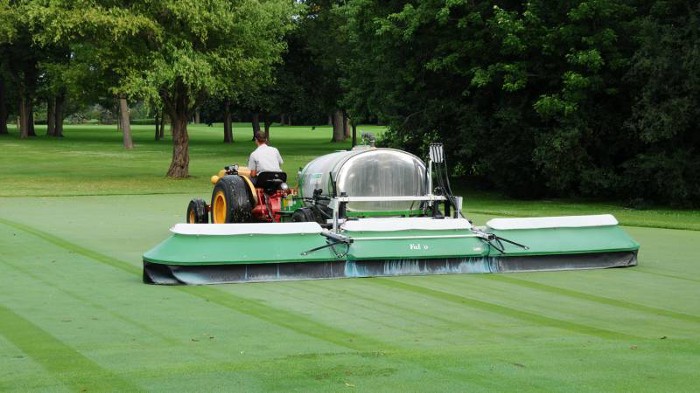Create a Living Near Golf Course without Toxic Pesticide and Herbicide

A house on a golf course is a dream come true for most homeowners. Even non-golfers find themselves attracted to the country club lifestyle with access to golf course, pool, and social network.
A new concern of golf course living is the toxicity of golf course maintenance with pesticide and herbicide. The golf course superintendents are exposed to high level of chemicals due to occupational hazard. However, the pesticide drift is also affecting the nearby residents, particularly the children and the pregnant women.
Golf courses applied about 50,000 pounds of pesticides in one year, which is four to seven times more than the average amount utilized in agriculture on a pound/acre basis.
– Toxic Fairways
What is the risk
Pesticides, herbicides, and insecticides are all used to maintain the cosmetic appeal of golf greens. Excess chemical can leach into ground and surface water, and also encourage pest and weed tolerance.
The most powerful insecticide known to man is the controversial DDT (Dichlorodiphenyltrichloroethane). Now the replacements might be equally concerning.
- 2,4-dichlorophenoxyacetic acid (2,4-D)
- Chlorpyrifos
- Glyphosate
How are we exposed
Pesticide drift can occur during or after application, whereby the particles or vapors become airborne, potentially travel over half a kilometre, and land on a surface. These surfaces include exterior walls, furniture, doors, windows, fans, toys, and residential lawns that citizens continually come into contact with and track inside the home.
After a golf course is sprayed with pesticides, golfers can accumulate residue on their clothing and skin, which can be absorbed by the body and transferred into the home.
Good maintenance responsibilities
Methods to maintain turf that discourage weeds and fungal disease, lowering the need for herbicide and fungicide application:
- Testing pH level of the soil
- Mowing above 1.75 inches
- Making sure not too compacted but properly aerated
- Adding compost or organic fetilizer as organic nutrients to the soil
- Using biocatalyst as supplement or alternative to chemicals
Good resident practices
Standard practices by golf club members, country club members, nearby residents and neighbors:
- Using their influence as a consumer to demand golf courses adopt non-toxic maintenance procedures
- Planting tall hedges along fence lines to act like a shield against chemical drift
- During spray hours, closing all windows and turning off heating and cooling vents to limit the infiltration of freshly sprayed chemicals into the home.
- Applying ‘No Shoes’ policy in the house
- Removing golf attires before entering the house
100% FREE TRIAL
Discover how CEMAX Sentinel Biocatalyst being the best ecological solution, help to improve your turf grass and making your way of becoming a golfer friendly golf course.
Contact us
email : sales [at] cemax [dot] com [dot] my
whatsapp : +60 16 207 5400





